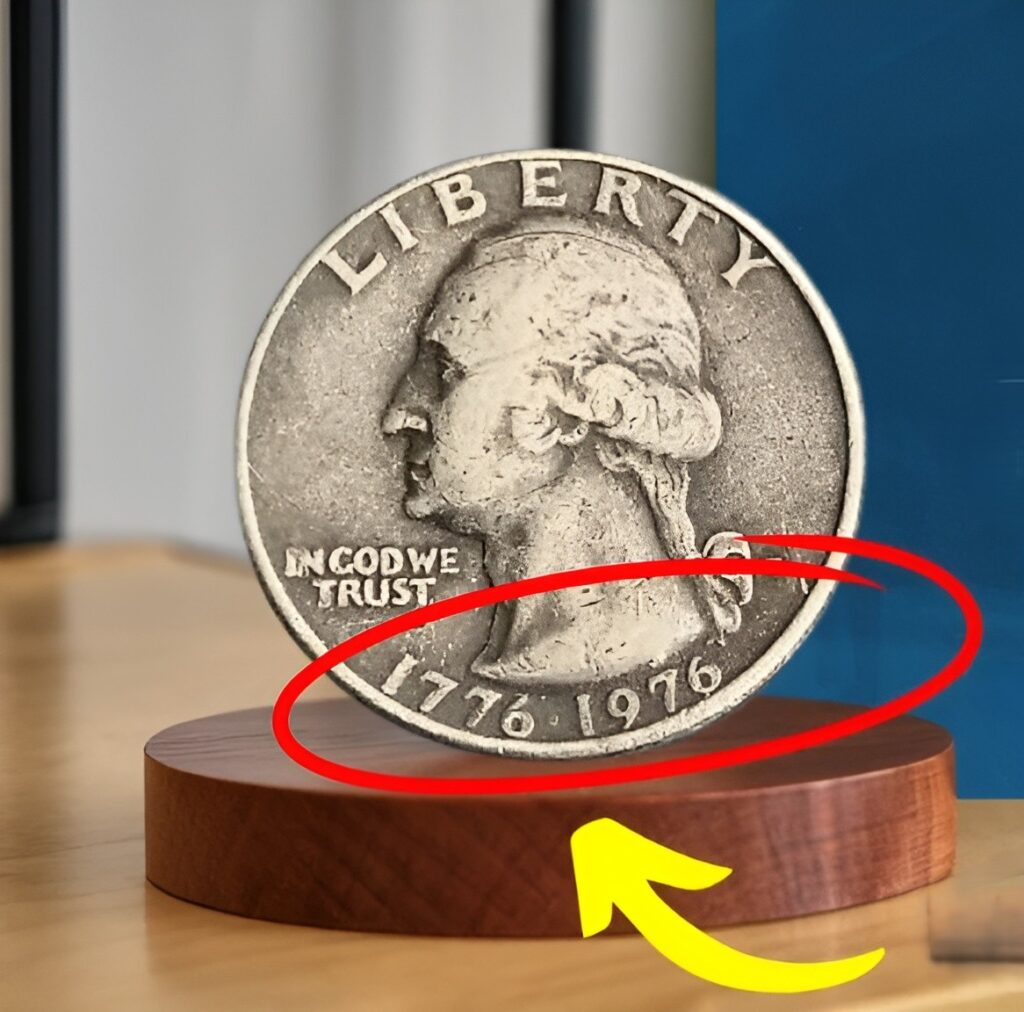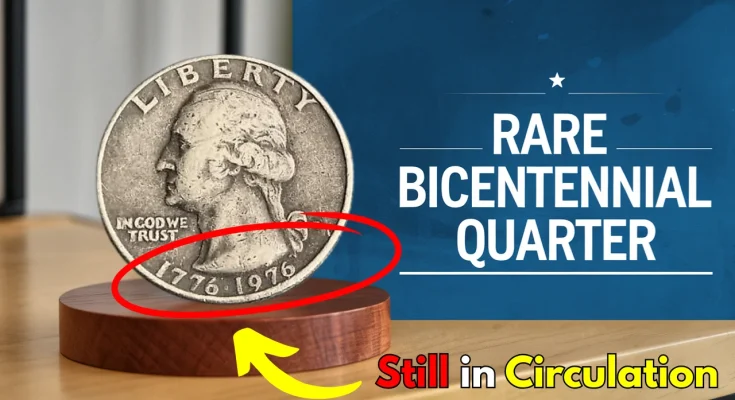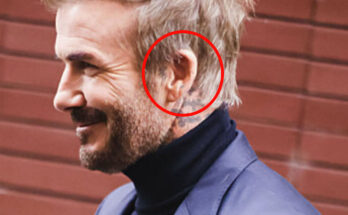

In a twist that’s baffling both collectors and the general public, a rare Bicentennial Quarter has recently been valued at an eye-popping $4.713 million—and what’s more surprising is the possibility that a few like it might still be in circulation. Yes, that quarter in your pocket change might just be worth more than a luxury home.
The Bicentennial Quarter, officially minted in 1975 and 1976, was part of the U.S. Treasury’s celebration of the nation’s 200th birthday. The reverse side of the coin features a Colonial drummer, replacing the traditional eagle, and the dates “1776–1976” replace the single date that typically appears. These quarters were widely circulated, and most Americans have seen one at some point.
But not all Bicentennial Quarters are created equal.

The $4.713 Million Coin – What’s So Special?
The quarter that’s making headlines isn’t your average pocket change. This multi-million-dollar coin is a rare error specimen that features a double die obverse and was struck on a 90% silver planchet, something never intended for regular circulation. It also boasts near-perfect grading, which significantly boosts its value among collectors.
Only one known example of this error quarter has surfaced, and it was reportedly discovered during a private collection appraisal—hidden in plain sight for decades. The unique combination of minting error, silver content, and pristine condition sets it apart from the millions of standard Bicentennial Quarters in circulation.
Why Is It Still Relevant Today?
What makes this story more than just collector gossip is the very real chance that other rare Bicentennial Quarters might still be sitting unnoticed in change jars, vending machine trays, or coin collections across the country. The U.S. Mint produced over 1.6 billion Bicentennial Quarters, with various mint marks (D, S, and no mark for Philadelphia). While most are worth face value, certain versions—especially proof strikes or errors—can command thousands or even millions under the right circumstances.
What to Look For
If you’re curious whether your Bicentennial Quarter might be worth something, here are a few things to watch for:
- Silver Content: Special collector sets in 1976 featured 40% silver quarters. These are distinguishable by weight and luster.
- Mint Errors: Look for doubled lettering (especially in “LIBERTY” or “IN GOD WE TRUST”), off-center strikes, or unusual die marks.
- Proof or Uncirculated Quality: A coin that has never been used in general circulation and retains its original mint shine could be highly valuable.
- Mint Marks: “S” mint marks (San Francisco) are commonly associated with silver or proof versions.
The Buzz in the Collector World
Numismatic experts and auction houses have started issuing public calls encouraging people to re-examine their loose change. Some online marketplaces have already seen a spike in Bicentennial Quarter listings, with prices ranging from a few dollars to several thousand, depending on the coin’s condition and features.
The notion that a $0.25 coin could hold million-dollar potential is creating a wave of curiosity, prompting a new generation to become coin-aware. Social media platforms have exploded with videos of people checking coin jars and gas station change.
Could You Be Holding One?
Though the odds are slim, it’s not impossible. The U.S. Mint’s massive output and a few overlooked minting errors mean that genuine rarities can go unnoticed for decades. In the case of this $4.713 million Bicentennial Quarter, its discovery serves as a reminder that treasure doesn’t always come in gold bars or gemstone-encrusted boxes. Sometimes, it’s in your jean pocket.
Bottom Line: The Bicentennial Quarter may be one of the most common coins around, but rare variants—especially those with minting errors and precious metal compositions—can be worth a fortune. With one confirmed example fetching over $4.7 million, coin enthusiasts and everyday Americans alike are now giving their spare change a second look.
Check your quarters. You might be richer than you think.


